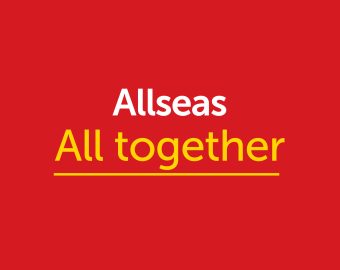Customs Declaration changes and what you need to know
12 February 2019
As of January 2019, a new Customs Declaration Service (CDS) replaces the previous Customs Handling of Import and Export Freight (CHIEF) system. HMRC began the phased launch of CDS in August 2018, initially running alongside CHIEF to allow people time to adapt to the new system.
The CDS system records declarations to Customs of goods by land, air and sea. It allows importers, exporters and freight forwarders to complete customs information electronically and checks for any entry errors.
This system is also part of HMRC’s risk assessment process as it identifies any consignments, or goods with consignment, that will require a physical examination, or have their documentation explained. This gives legitimate goods, and those deemed to be a low-level risk, faster passage when they are directly imported from non-EU countries, or exported to them from the UK.
Why are things changing?
While CHIEF was one of the world’s largest, and most sophisticated electronic services for managing customs declaration processes. The CHIEF system is almost 25 years old, which means it’s not easily adaptable to new requirements. CDS will be scalable meaning it will be capable of handling increased volume of declarations, something that could occur as a result of the UK’s impending exit from the EU.
How will this affect importers and exporters?
If a trader imports or exports goods outside the EU, they or their freight forwarder will have been using the current CHIEF system to:
- Process declarations for goods entering and leaving the UK or EU through ports and airports
- Calculate and pay the correct duty and taxes
- Complete customs information electronically
Since the CDS system has been completely implemented, they will still be able to do the things CHIEF system did, but there are differences:
- CDS is accessed on gov.uk using a Government Gateway account – if traders use a customs declaration software package, they will need to follow the instructions and documentation from their supplier
- CDS offers several new and existing services in one place – for example; traders will be able to view previous import and export data on pre-defined reports, check the tariff, apply for new authorisations and simplifications, and check their duty deferment statement
- Online help will include self-service tools, guidelines and checklists
Some additional information will be required for declarations to align with the World Customs Organisation Kyoto Convention, which is currently being implemented in the UK through the Union Customs Code (UCC):
- An audit trail of previous document IDs
- Additional party types, such as the buyer and seller
- Possible additional commercial references or tracking numbers
- Levelling – change between ‘Header’ and ‘Item’ for some data items
To align with UK customs data with international standards, there are also changes to:
- Location of goods identification (based on UNLOCODE)
- The warehouse-type code list
- Item tax lines, including the method of payment codes
- Unit of quantity codes (ISO)
- The way customs procedures are quoted
- The number of items on a declaration – CDS allows a maximum of 999 items on a customs declaration instead of the 99 items on CHIEF
Source: Getting ready for the Customs Declaration Service – GOV.UK. https://www.gov.uk/government/news/getting-ready-for-the-customs-declaration-service
Sign up to our newsletter
To receive bi-monthly industry updates, plus opinion and insights from our expert Logistics Consultants, sign up here.
This site is protected by reCAPTCHA and the Google Privacy Policy and Terms of Service apply.


